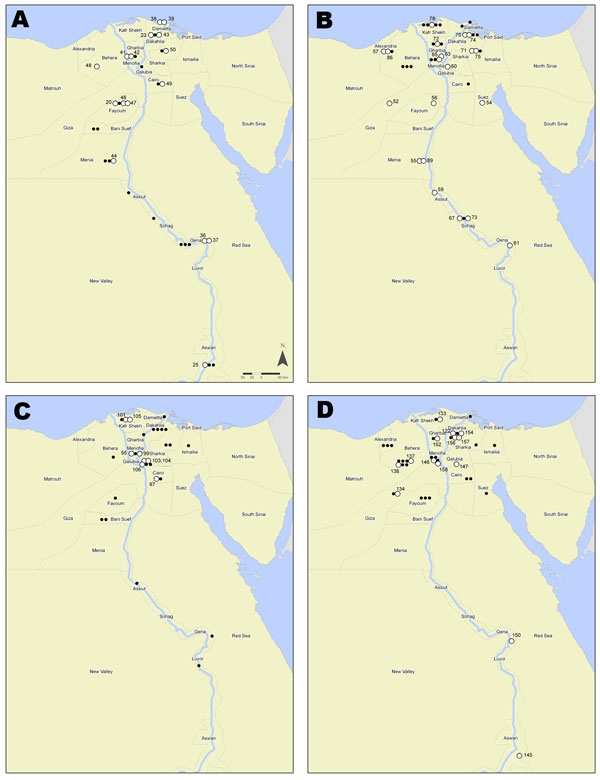Volume 19, Number 1—January 2013
Research
Microevolution of Highly Pathogenic Avian Influenza A(H5N1) Viruses Isolated from Humans, Egypt, 2007–2011
Figure 2

Figure 2. . . Geographic distribution of humans with highly pathogenic avian influenza A(H5N1) virus infection yielding clade 2.2.1 isolates, Egypt, 2007–2011. Each case is shown within the governorate that reported the case; however, locations within governorate territories are arbitrary and do not represent exact coordinates. White circles indicate the 59 confirmed cases from this study with fully sequenced viral genomes; numbers are the corresponding World Health Organization case numbers. Black dots indicate confirmed cases. Cases include 25 from 2007 and 8 from 2008 (A); 39 from 2009 (B); 29 from 2010 (C); and 39 from 2011 (D).
1These authors contributed equally to this article.
Page created: December 20, 2012
Page updated: December 20, 2012
Page reviewed: December 20, 2012
The conclusions, findings, and opinions expressed by authors contributing to this journal do not necessarily reflect the official position of the U.S. Department of Health and Human Services, the Public Health Service, the Centers for Disease Control and Prevention, or the authors' affiliated institutions. Use of trade names is for identification only and does not imply endorsement by any of the groups named above.